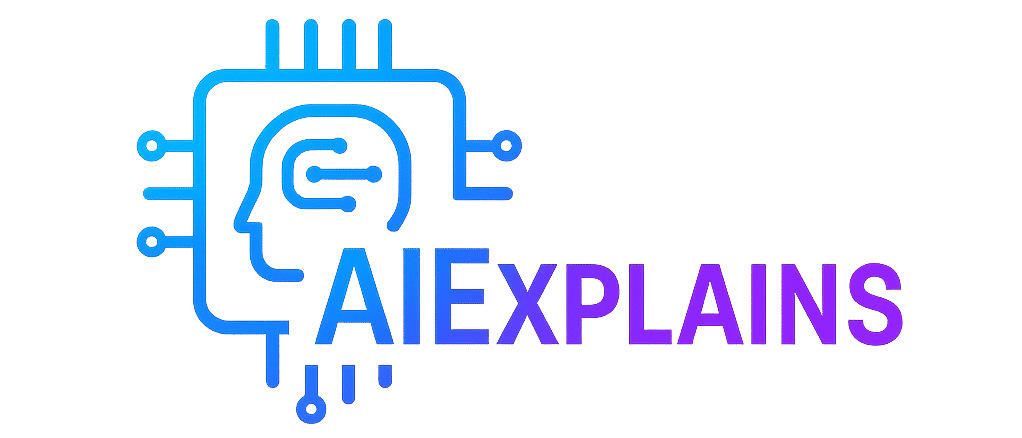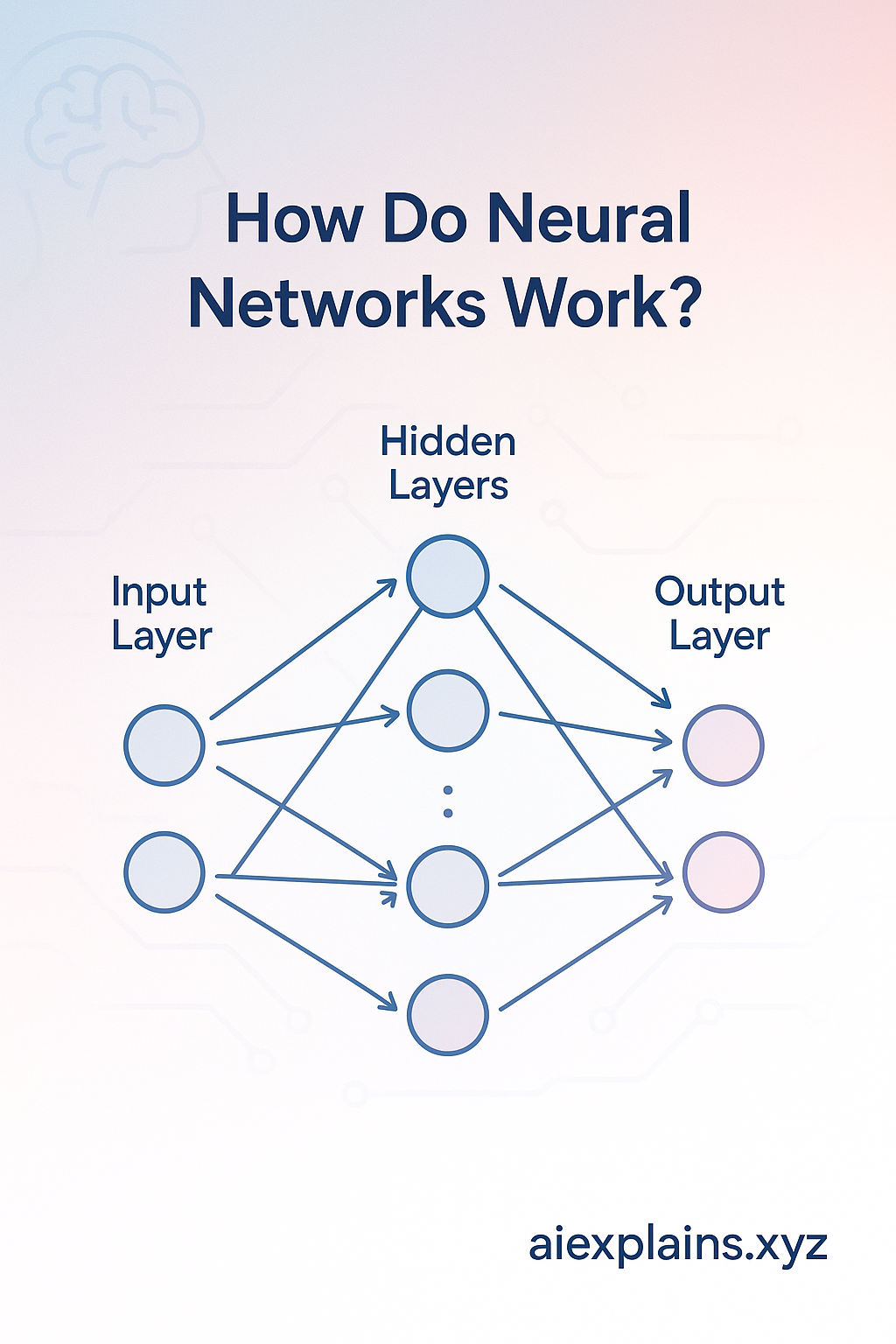🤖 Introduction
Neural networks are the secret sauce behind many AI breakthroughs — from self-driving cars to voice assistants like Siri and Alexa. But what exactly are they, and how do they work?
If you’ve heard the term but felt overwhelmed by complex explanations, this post is for you. We’ll break it down simply, step-by-step.
🧩 What Is a Neural Network?
Think of a neural network as a simplified version of the human brain. Just as your brain processes information using neurons, a neural network uses artificial neurons to analyze data and make decisions.
These neurons are organized into three main layers:
- Input Layer: Where the data enters (e.g., an image or sentence)
- Hidden Layers: Where patterns are learned and processed
- Output Layer: Where the result comes out (e.g., “cat” or “dog”)
🔄 A Simple Analogy
Imagine you’re deciding whether to bring an umbrella. You ask:
- Is it cloudy?
- What does the weather app say?
- Do I hear thunder?
Each of these is an input. You mentally process them and make a decision. A neural network does the same thing — it takes multiple inputs, analyzes them, and produces an output.
🧠 How Neural Networks Learn
Neural networks learn through a process called training. Here’s how it works:
- Feed in Data: Show the network lots of examples (like thousands of cat and dog photos).
- Make a Guess: It tries to predict what each image shows.
- Check for Mistakes: It compares the prediction to the actual answer.
- Adjust Weights: It tweaks its internal “rules” to improve.
- Repeat: This process continues until the network gets really good.
This is powered by two key techniques:
- Backpropagation: Helps the network learn from its errors
- Gradient Descent: Optimizes learning by minimizing mistakes
📚 Common Terms (Explained Simply)
- Neuron: A small unit that processes information
- Weight: A value that tells the network how important an input is
- Activation Function: A rule that decides whether a neuron “fires” or not
- Epoch: One full cycle through all training data
🌍 Real-World Uses of Neural Networks
Neural networks power many AI applications you use every day:
- Facial Recognition (e.g., unlocking your phone)
- Voice Assistants (e.g., Alexa understanding commands)
- Self-Driving Cars (e.g., identifying pedestrians or road signs)
- Medical Imaging (e.g., detecting tumors from scans)
💬 Why Should You Care About Neural Networks?
Because they’re everywhere. Whether you’re building an app, running a business, or just curious about the future of tech, understanding neural networks gives you a huge edge in today’s AI-driven world.
Plus, knowing how they work demystifies a lot of AI hype.
🚀 Final Thoughts
Neural networks aren’t magic — they’re just smart systems that learn from data. With the right examples, they can become incredibly powerful tools.
At AIExplains, we’re here to help you make sense of it all — one idea at a time.


